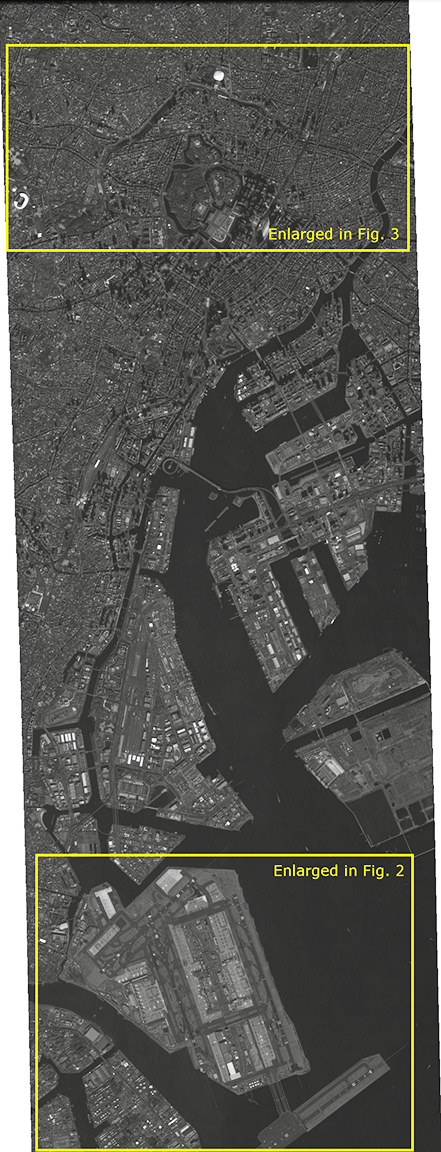
Since the previous Axelspace announcement, progress continues on the check-out operations of the first GRUS satellite, which was developed by the company and was successfully launched on December 27, 2018.

Figure 1
First light image (whole area).
Image is courtesy of Axelspace.
As the company has confirmed with the correct operation of the on-board optical apparatus, just released is the satellite’s first light image.

Top image: Fig. 2: Enlarged image (Haneda Airport)
Bottom image: Fig. 3: Enlarged image (Central Tokyo)
Images are courtesy of Axelspace.
The company also progressed toward the release of the AxelGlobe platform, perfecting the constellation’s automatic operation system and working on the consolidation of the image quality as well as on the web portal. The platform is expected to be released in May.
First light details
Here are the details of GRUS’s first light image.
- Capture time: 10:45 AM, March 2, 2019 (Japan Standard Time)
- Capture location: Tokyo, Japan
Figure 1 shows the whole first light image and is illustrated as a gray scale image as it was created out of single panchromatic band data.
Figures 2 and 3 show two details of the same image and they may be downloaded from their following respective links. However, be advised that those data cannot be used for product evaluation due to the nature of first light. Data for product evaluation will be distributed at a later date.
Main Mission Specifications of GRUS
- Spectral Bands: Panchromatic(450-900nm), Blue(450-505nm), Green(515-585nm),
Red(620-685nm), Red Edge(705-745nm), Near Infrared(770-900nm) - Swath: 57+Km
- Ground Resolution: Panchromatic: 2.5m
- Multispectral: 5.0m
- Bit Depth: 12bit
Of the first light showcased above, Figure 1 shows only the panchromatic band with 2.5 meter resolution, while Figures 2 and 3 are 2.5 meter pan-sharpened images, e.g., compositions of the panchromatic, green, blue and red bands. The final product properties at the time of AxelGlobe’s release may be different from the ones shown here.
